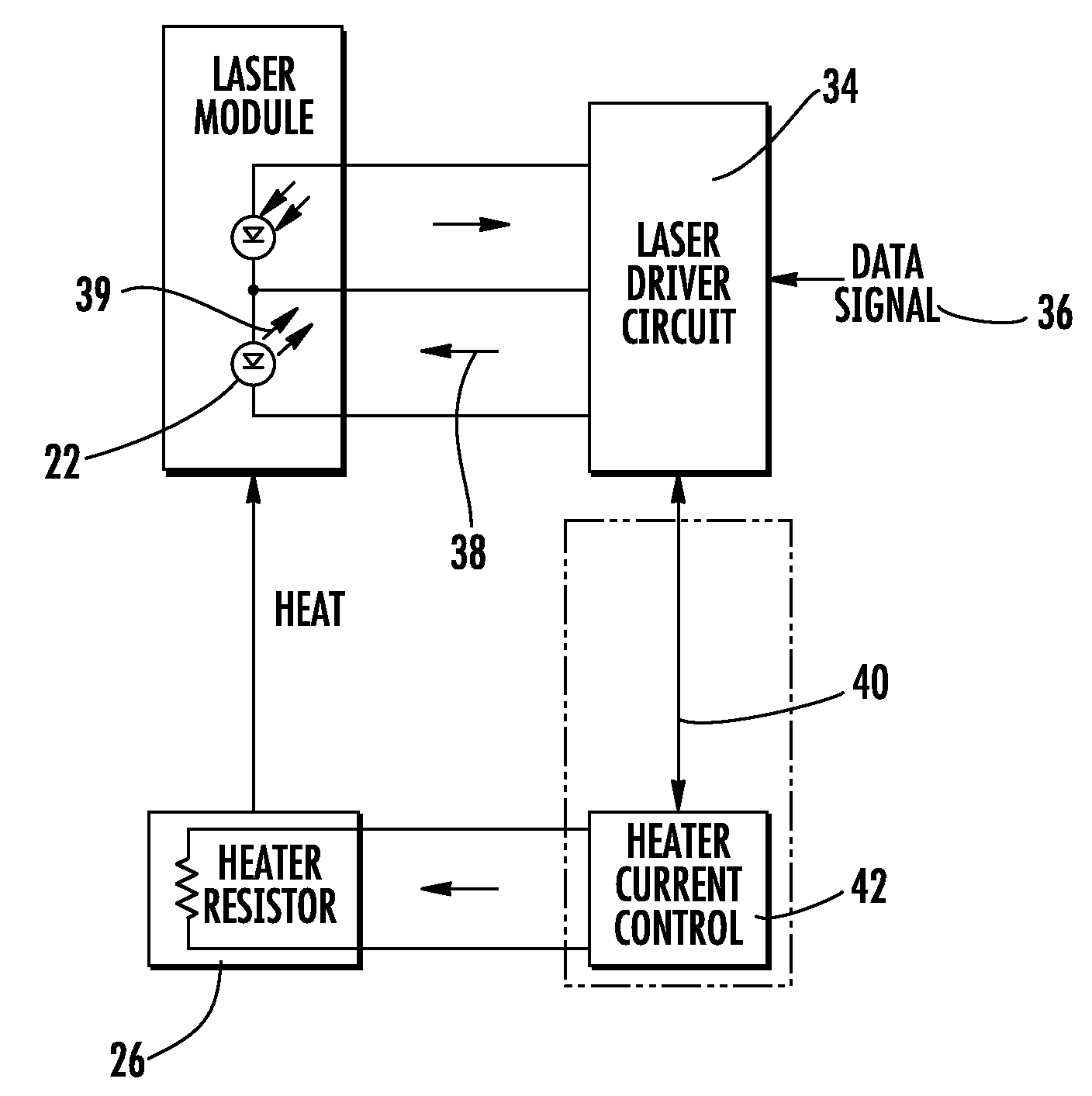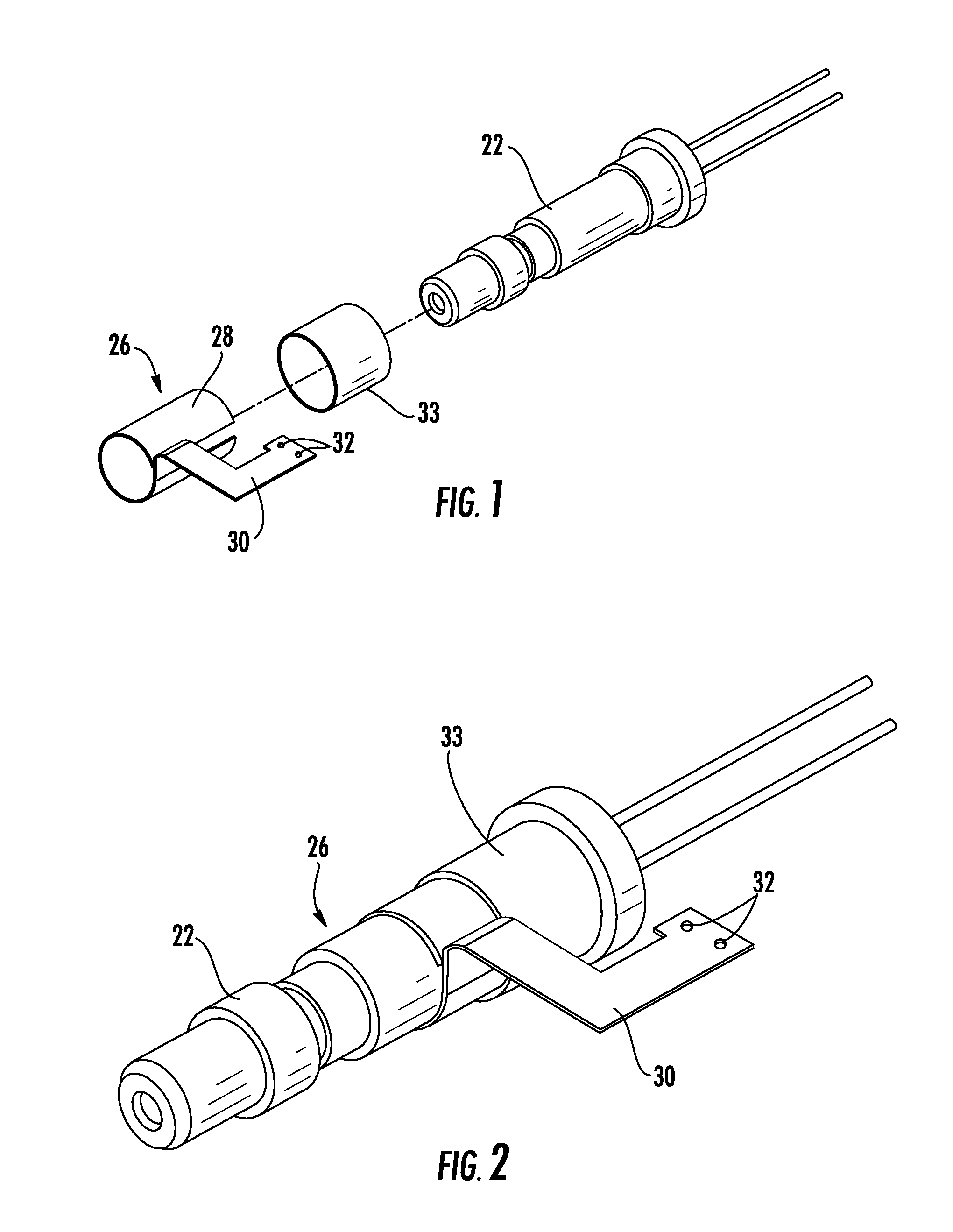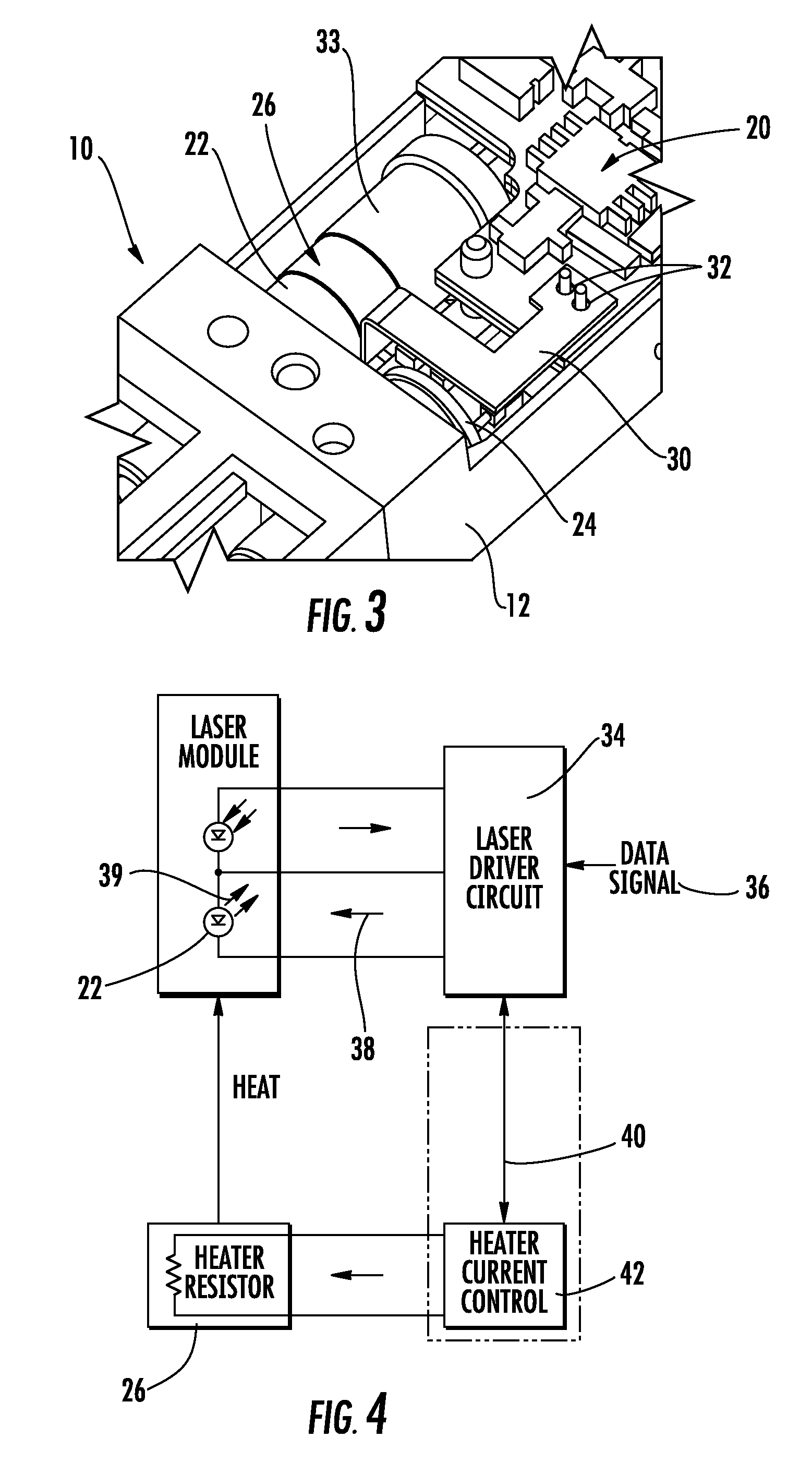Wide temperature range uncooled transceiver module for uncontrolled environments
a transceiver module and wide temperature range technology, applied in lasers, laser cooling arrangements, laser details, etc., can solve the problems of large size and power consumption of optical transmitter packages, small tolerance for wavelength selection of dfb lasers, and increased heating costs, so as to improve heating efficiency
- Summary
- Abstract
- Description
- Claims
- Application Information
AI Technical Summary
Benefits of technology
Problems solved by technology
Method used
Image
Examples
Embodiment Construction
[0017]Now referring to the drawings, a pluggable optical transceiver module in accordance with the teachings of the present invention is illustrated and generally indicated at 10 in FIG. 3. The pluggable optical transceiver module 10 includes a housing generally indicated at 12. The transceiver module 10 shown in FIG. 3 is a transceiver capable of transmitting and receiving signals over a pair of coupled fiber optic transmission cables. The transceiver module 10 includes an optical subassembly generally indicated at 20 that includes an optical transmitter (TX) 22 in the form of a coaxial semiconductor laser and an optical receiver (RX) 24 such as a photodiode. The optical sub-assembly 20 shown in FIG. 3 is one example of a unit that can be installed in the optical transceiver module 10 of this invention and is shown for illustration purposes only. It is recognized that other optical subassembly units having different configurations can be installed in the optical transceiver 10 in a...
PUM
 Login to View More
Login to View More Abstract
Description
Claims
Application Information
 Login to View More
Login to View More - R&D
- Intellectual Property
- Life Sciences
- Materials
- Tech Scout
- Unparalleled Data Quality
- Higher Quality Content
- 60% Fewer Hallucinations
Browse by: Latest US Patents, China's latest patents, Technical Efficacy Thesaurus, Application Domain, Technology Topic, Popular Technical Reports.
© 2025 PatSnap. All rights reserved.Legal|Privacy policy|Modern Slavery Act Transparency Statement|Sitemap|About US| Contact US: help@patsnap.com



